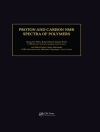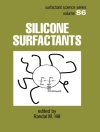The use of ceramics in biological environments and biomedical applications is of increasing importance, as is the understanding of how biology works with minerals to develop strong materials. These proceedings contain papers that discuss the interface between biology and materials, presented at the Proceedings of the 30th International Conference on Advanced Ceramics and Composites, January 22-27, 2006, Cocoa Beach, Florida. Organized and sponsored by The American Ceramic Society and The American Ceramic Society’s Engineering Ceramics Division in conjunction with the Nuclear and Environmental Technology Division.
Table des matières
Preface.
Introduction.
In Vitro Evaluation.
Initial In Vitro Interaction of Human Osteoblasts with
Nanostructured Hydroxyapatite (NHA) (Xingyuan Guo, Julie Gough,
Ping Xiao, Jing Liu, and Zhijian Shen).
Osteoblast Response to Zinc-Doped Sintered p-Tricalcium
Phosphate (Sahil Jalota, Sarit 8. Bhaduri, and A. Cuneyt Tas).
Determination of the Spatial Resolution of Micro-Focus X-Ray CT
System with a Standard Specimen (Mineo Mizuno, Yasutoshi Mizuta,
Takeharu). Kato, and Yasushi lkeda
Processing of Biomaterials.
Hydroxyapatite Hybridized with Metal Oxides for Biomedical
Applications (Akiyoshi Osaka, Eiji Fujii, Koji Kawabata,
Hideyuki Yoshirnatsu, Satoshi Hayakawa, Kanji Tsuru, Christian
Bonhornrne, and Florence Babonneau).
Preparation of Self-setting Cement-Based Micro- and Macroporous
Granules of Carbonated Apatitic Calcium Phosphate (A. Cuneyt
Tas).
A Self-setting, Monetite (Ca HPO, ) Cement for Skeletal Repair
(Tarang R. Desai, Sarit B. Bhaduri, and A. Cuneyt Tas).
Chemically Bonded Ceramics Based on Ca-Aluminates as
Biomaterials (L. Herrnansson and H. Engqvist).
A Theoretical and Mathematical Basis Towards Dispersing
Nanoparticles and Biological Agents in a Non Polar Solvent for
Fabricating Porous Materials (Navin J. Manjooran and Gary R.
Pickrell).
Preparation of Hydroxyapatite and Calcium Phosphate Bioceramic
Materials from the Aqueous Solution at Room Temperature (Jia-Hui
Liao, Yu-Chen Chang, and Tzer-Shin Sheu).
Hydroxyapatite Coatings Produced by Plasma Spraying of Organic
Based Solution Precursor (E. Garcia, Z. B. Zhang, T. W. Coyle, L.
Gan, and R. Pilliar).
Visible-Light Photocatalytic Fibers for Inactivation of
Pseudomonas Aeruginosa (P. G. Wu, R. C. Xie, J. Irnlay, and J. K.
Shang).
Precipitation Mechanisms of Hydroxyapatite Powder in the
Different Aqueous Solutions (Yu-Chen Chang and Tzer-Shin Sheu).
Conversion of Bioactive Silicate (45S5), Borate, and
Borosilicate Glasses to Hydroxyapatite in Dilute Phosphate Solution
(Wenhai Huang, Moharned N. Raharnan, and Delbert E. Day).
Dental Ceramics.
Variable Frequency Microwave (VFM) Processing: A New Tool to
Crystallize Lithium Disilicate Glass (Morsi Mahmoud, Diane Folz,
Carlos Suchicital, David Clark, and Zak Fathi).
Author Index.
A propos de l’auteur
Andrew A. Wereszczak received his Ph.D. in Materials Science
& Engineering from the University of Delaware in 1992, and
while his research is varied, the study and interpretation of the
relationship between mechanical properties and microstructure (of
monolithic ceramics, structural materials, and electronic
materials) are common denominators. Micromechanical
characterization of structural and armor ceramics using
instrumented static and dynamic indentation (e.g., Hertzian) with
acoustic emission analysis, and adapting those measured
performances and damage mechanism analyses to strength, rolling
contact fatigue, wear, machining, and ballistic performances is a
primary objective.
Additionally, ceramic strength and fatigue testing, ceramic
fractographical and flaw population analyses, Weibull analysis
strength-size-scaling, and probabilistic life prediction and design
of structural ceramic components constitutive another primary
research objective. In support of all these efforts, both
conventional and microstructural-level finite element stress
analyses and microstructure characterization are performed. He is
the author or co-author of over 100 technical publications and has
given over 80 presentations, and is the co-developer of
µ-FEA software.
Edgar Lara-Curzio is a Distinguished Research Staff
Member and the leader of the Mechanical Properties and Mechanics
Group at Oak Ridge National Laboratory. Since 1999 he has
been serving as leader of the Mechanical Characterization and
Analysis User Center in ORNL’s High Temperature Materials
Laboratory. Lara-Curzio received a B.Sc. degree in
Engineering Physics from the Metropolitan University in Mexico City
in 1986 and a Ph.D. in Materials Engineering from Rensselaer
Polytechnic Institute, Troy NY, in 1992.
His research work has been focused on studying the mechanical
behavior, durability and reliability of structural and functional
materials, on understanding the relationships among their
processing, microstructure and properties, studying the effect of
service environment on their properties and on developing models to
describe their behavior and to predict their service life.
Dr. Lara-Curzio has co-edited 6 books and has authored 4 book
chapters and more than 140 publications in refereed journals and
conference proceedings.












